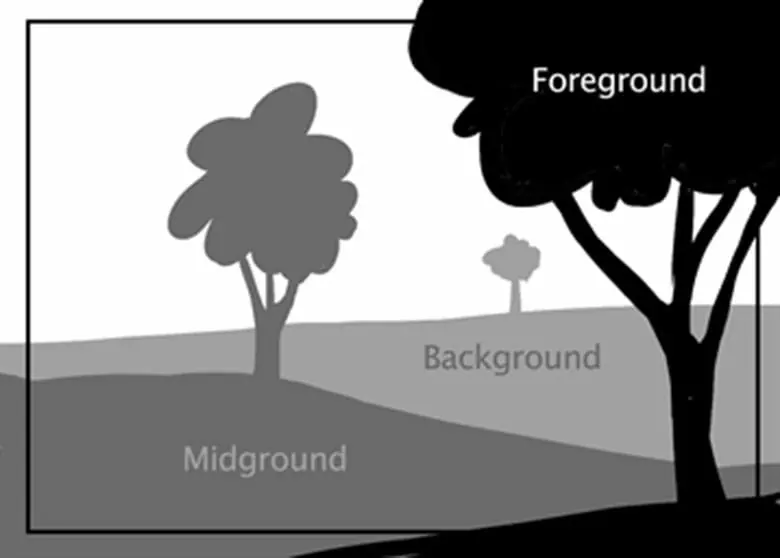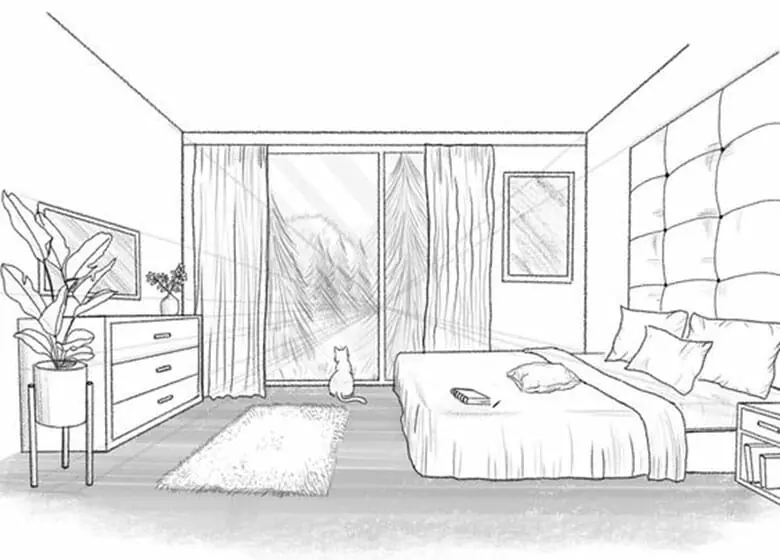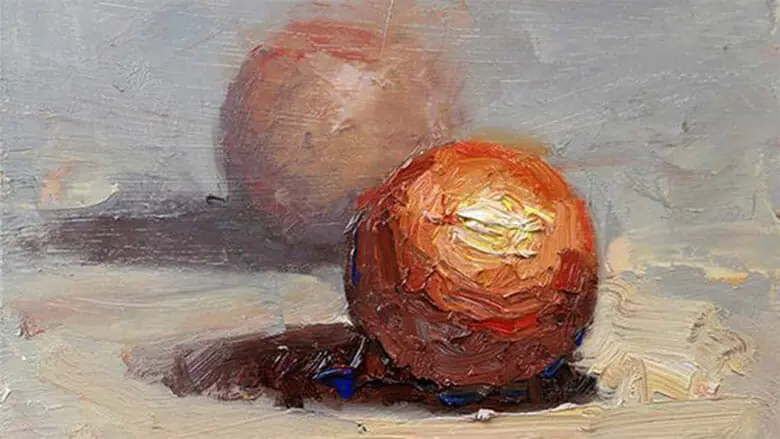As an aspiring artist, if you’ve ever felt frustrated with your inability to create depth in your artwork, you’re not alone.
But don’t give up yet!
With dedication and practice, you can elevate your piece from a flat surface to a stunning masterpiece with depth and substance.
In this article, we’ll go over 5 steps for creating depth in art.
Let’s get started.
What Is Depth in Art?
Depth in art refers to creating an illusion of three-dimensional space on a two-dimensional surface, which adds a sense of realism to the artwork.
Depth is created by using techniques such as linear and atmospheric perspective, shading, overlapping, and scale to create a sense of distance between objects in the artwork.
With the proper use of depth, artists can give their art a sense of space, movement, and dimensionality, which makes the artwork more compelling and engaging for the viewer.
Let’s explore a little more about depth below:
5 Steps for Creating Depth in Art
From mimicking a sense of distance to experimenting with different perspectives, these five steps will help you create captivating artwork that draws others in.
#1 Separate Your Foreground and Background

Separating your foreground from your background is a MUST if you want to add depth to your painting.
General Tips for Distinguishing Objects in the Foreground and Background:
Here are some other tips for separating your foreground from your background in your artwork:
- Use a contrast of hard edges and soft edges between the background, midground, or foreground. Your focal point should look more solid.
- Add less detail to distant objects in the background to create a focal point in the foreground or midground, and vice versa if your focal is in the background.
- Use varying line thickness. Bolder, thicker lines tend to pop forward, while soft lines varying in value tend to move away from our view.
- Use color and lighting to emphasize the separation between the foreground and farther objects in the background. Specifically, add cast shadows upon objects to further give the impression of depth and space.
- Add texture for contrast and depth. Texture creates contrast when put up against a smooth, blended area of your artwork, and brings itself forward.
By following these simple tips, you can add depth and visual interest to your artwork and create a clear distinction between foreground and background objects.
Atmospheric or Aerial Perspective
Atmospheric or Aerial Perspective is a general term that describes a technique used in art to create the illusion of distance by employing four key elements: color, value, contrast, and texture.
It causes a farther object (or objects) to appear less vibrant or dull in color, and lighter in tone towards the horizon.
This technique also reduces contrast and texture as the objects move farther away from the viewer.

While Atmospheric Perspective is one way to depict space, there are other ways artists can create a sense of depth and dimension in their work, which leads us to our next step:
#2 Play with Perspective
Perspective is one of the most important techniques to learn for creating the illusion of depth in art.
It is based on a series of straight lines that sprout from the horizon point.
The type of perspective you have depends on how many vanishing points you have on a single horizon or vanishing line.
Linear Perspective
Linear perspective is a technique in art that uses lines and vanishing points to create the illusion of depth and space on a flat surface.

It is commonly used in drawings, paintings, and other forms of visual art to create a sense of realism and dimensionality, and helps the viewer perceive distance.
Linear perspective can be used in various forms, including one-point, two-point, and three-point perspectives, and is often applied in architectural and landscape art to create a convincing representation of space and distance.
1-Point Perspective
One-point perspective is a type of linear perspective where all the vertical strokes converge towards a single vanishing point.

2-Point Perspective
Two-point perspective is a type of linear perspective that uses two points. In a two-point perspective, vertical lines in a painting converge toward two different points on the horizon line, and the viewer is looking parallel to the ground.

3-Point Perspective
In a three-point perspective, vertical lines converge towards three different vanishing points. Two vanishing points are on the horizon line, while the third vanishing point is a considerable distance either above or below the horizon line, creating the illusion of depth when viewed from a high or low angle.
A common term for viewing from a high angle is “bird’s eye perspective,” while its opposite, low angle view is called “worm’s eye” perspective.

5-Point Perspective
Also known as the fisheye perspective, this type of linear perspective has five vanishing points. The viewer is placed at the center of the painting, and the lines of the objects converge towards five different vanishing points. This technique is often used in abstract or experimental artwork to create a distorted sense of space.
Isometric Perspective
Isometric perspective creates a three-dimensional representation of an object or space on a two-dimensional surface, such as a piece of paper or a computer screen.
This is achieved by using parallel lines that are angled equally to accurately depict the height, width, and depth of the object or space.
Unlike other perspective forms, isometric perspective does not involve converging lines or a vanishing point, making it particularly useful for technical drawings and architectural renderings.
If you want to master perspective, this art course at New Master’s Academy could be just what you need!
#3 Experiment with Layers
Layering and overlapping objects can create depth by distinguishing between objects in the foreground and background. This gives your composition depth perception.
This technique is commonly used in paintings, drawings, and graphic design to create dynamic and visually appealing compositions.
And if you’re painting in acrylic or oil, you can take layering a step further by adding texture with thick paint (giving your artwork a literal 3-D appearance).

#4 Use Different Values for Volume and Depth
What is value in art?
Value in art refers to the lightness or darkness of a color, which is crucial for creating the illusion of depth, volume, and dimensionality in an artwork.
By using different values, artists can create the illusion of light and shadow, making objects appear three-dimensional and lifelike.
This free resource by Evolve can help you master using values for volume and depth.
Artists can use contrasting values in their artwork to create volume and depth.
For example, darker values can be achieved using cool colors such as dark blue and purple, while lighter values can be achieved using warmer colors like yellow and orange (and of course– white!).

By using contrasting values, you can create a sense of light and shadow, giving your subject matter a more solid appearance.
Even in a monochromatic drawing, depth can still be created by considering factors such as the direction and intensity of the light source, shadow areas, and contrast.
Highlights are also essential when trying to create depth, as they represent reflected light and can add a sense of luminosity and dimensionality to an artwork.
#5 Pay Attention to Composition
Composition refers to how the elements of a painting, such as color, line, shape, texture, and space are arranged within your artwork.
Overall, a well-composed artwork considers the arrangement of elements and how those elements can be used to create a sense of depth and spatial relationships between objects.
How Depth Benefits Your Piece: A Summary
Creating depth in your artwork is an essential technique that can elevate your piece from flat to multidimensional.
Whether you’re creating a pencil drawing, landscape painting, or still life, by applying the five steps we’ve covered in this article, you can create an illusion of depth that draws in the viewer and makes your artwork captivating and desired.
If you want to learn more about how to create depth in art, New Masters Academy has one of the best perspective courses I’ve come across.


